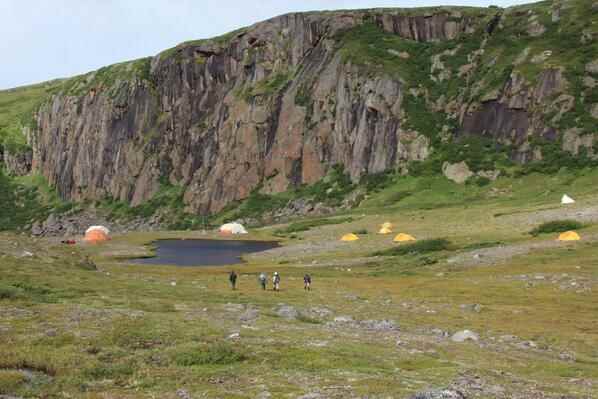The crater of Mistastin, in Labrador, could give vital information to future astronauts of the lunar mission Artemis, believes a Canadian expert.
Scientists had determined, in the mid-1970s, that this meteorite crater had lunar properties, but already the Apollo astronauts had completed one last mission. It was then too late for them to take advantage of the place to train.
Professor Gordon Osinski, from the Department of Earth Sciences at the University of Western Ontario, says it is an impact crater.
An impact crater is created when an asteroid or meteorite crashes into Earth approximately 36 million years ago. The shock wave caused it to lose some of its mass and caused crystallization. One of the particularities of the Mistastin crater, underlines Professor Osinski, is that it is formed of anorthosite, a pale reflective stone found in lunar lands.
“That’s why the crater would be one of the best training sites for Artemis astronauts,” he said. I wish every astronaut who walks on the Moon in the next few years has visited the impact crater in Labrador because of these attributes. »
In 2025, the Artemis III mission will bring astronauts to explore the lunar South Pole for the first time.
The crater, which forms a lake also called Kamestastin, is located on a traditional hunting territory of the Mushuau Innu First Nation. First Nation member George Rich says scientists will be welcomed as long as they ask permission to be there.
A spokeswoman for the Canadian Space Agency says no decision has yet been made about astronaut training.
“We will be happy to support such places when the time comes,” writes Sarah Berjaoui.
Apollo astronauts trained in a crater in Arizona, the diameter of which did not exceed one kilometer. That of Mistastin extends over 28 kilometers. In the early 1970s, the Apollo 16 and 17 astronauts also trained in Sudbury, Ontario, because of the lack of greenery and the lunar aspect of the landscape.
Cassandra Marion, a science advisor to the Canada Aviation and Space Museum, says she has visited the crater six times. For her, it is a landscape of breathtaking beauty.
The crater is on the border of tundra and boreal forest. You can get there by cargo plane since there are two airfields in the area.
The place is peaceful. The rocks are identical to those on the lunar surface, compare Mme Marion, but Mistastin stands out for several aspects, including the abundance of blueberry plants and a lake dating from the last ice age.
A crucial task
Professor Osinski has visited the crater twice. According to him, astronauts can be trained there in geology in the field. In particular, we could teach them how to choose samples well in a little explored sector.
“It’s absolutely crucial, because it’s not the astronauts who will be examining the samples when they return to Earth. These are the scientists. So it is very important to make sure that the astronauts will be able to collect this data. It will be necessary to sort between several dozen samples, which ones to choose to allow scientists to answer their questions? »
In September 2021, Canadian astronaut Joshua Kutryk and his NASA colleague Matthew Dominick, who will participate in Artemis, trained in the Mistastin crater to familiarize themselves with rocks they could observe on the Moon. These stones, often millions of years old, can be recovered from the cliffs.
“I am participating in discussions to return there in September with a larger group of Canadian and American astronauts,” says Prof. Osinski.
The prevailing theory is that the Moon is formed from debris caused by the collision between a celestial body the size of the planet Mars and the Earth several billion years ago. The molten surface has cooled. The lighter stones, known as anorthosite, may have risen to the outcrop, he says. They are the ones who gave the Moon its white reflection.
That’s why Mistastin is one of the most moon-like places. For Professor Osinski, this similarity is striking. “It’s absolutely one of the most remarkable geological places I’ve been to. »
